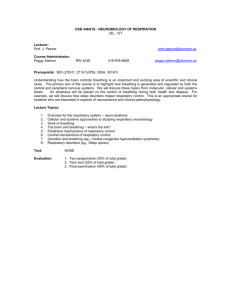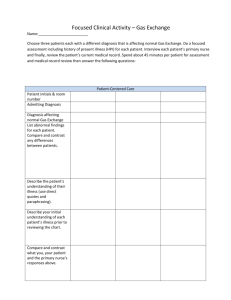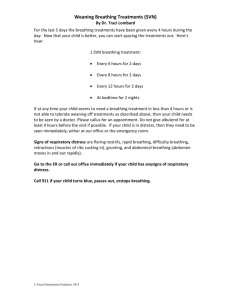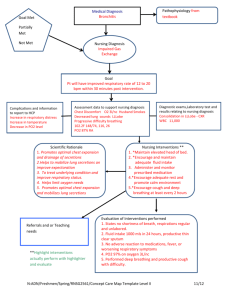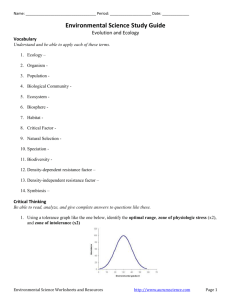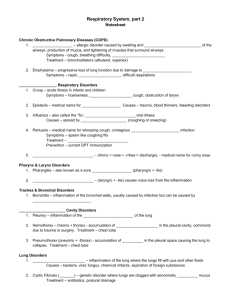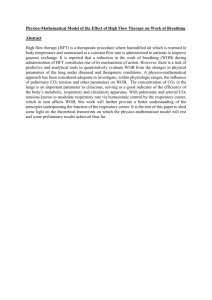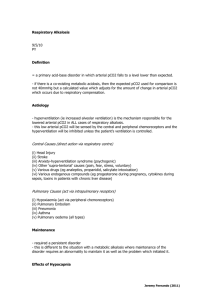Physio Unit 7 Pulmonary Learning Objectives PO2=concentration
advertisement
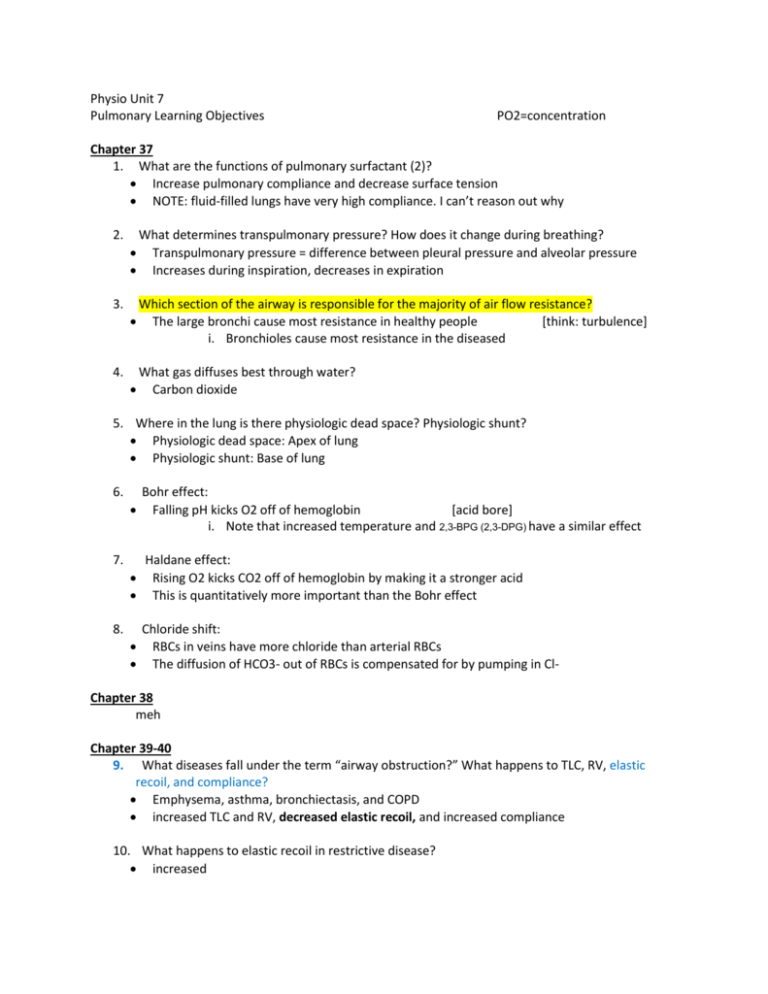
Physio Unit 7 Pulmonary Learning Objectives PO2=concentration Chapter 37 1. What are the functions of pulmonary surfactant (2)? Increase pulmonary compliance and decrease surface tension NOTE: fluid-filled lungs have very high compliance. I can’t reason out why 2. What determines transpulmonary pressure? How does it change during breathing? Transpulmonary pressure = difference between pleural pressure and alveolar pressure Increases during inspiration, decreases in expiration 3. Which section of the airway is responsible for the majority of air flow resistance? The large bronchi cause most resistance in healthy people [think: turbulence] i. Bronchioles cause most resistance in the diseased What gas diffuses best through water? Carbon dioxide 4. 5. Where in the lung is there physiologic dead space? Physiologic shunt? Physiologic dead space: Apex of lung Physiologic shunt: Base of lung 6. Bohr effect: Falling pH kicks O2 off of hemoglobin [acid bore] i. Note that increased temperature and 2,3-BPG (2,3-DPG) have a similar effect 7. Haldane effect: Rising O2 kicks CO2 off of hemoglobin by making it a stronger acid This is quantitatively more important than the Bohr effect 8. Chloride shift: RBCs in veins have more chloride than arterial RBCs The diffusion of HCO3- out of RBCs is compensated for by pumping in Cl- Chapter 38 meh Chapter 39-40 9. What diseases fall under the term “airway obstruction?” What happens to TLC, RV, elastic recoil, and compliance? Emphysema, asthma, bronchiectasis, and COPD increased TLC and RV, decreased elastic recoil, and increased compliance 10. What happens to elastic recoil in restrictive disease? increased 11. What is FEV1/FVC? How does it differ between restrictive and obstructive disease? Amount of air that can be forced from the lungs in one second / functional vital cap. Decreased in obstructive disease Increased or the same in restrictive disease i. although FEV1s decrease in both, FVC is tiny in restriction 12. What enzyme is affected by cyanide poisoning? Cytochrome oxidase is totally inhibited by cyanide poisoning Chapter 41 13. What is the Hering-Breuer inflation reflex? What neurons act as its sensors? The Hering-Breuer reflex is a protective mechanism that prevents over-inflation of the lungs Stretch receptors in the bronchi/bronchioles manage the reflex 14. Which respiratory group/center acts as the “overdrive” system, only active during deep respiration? Which group increases respiratory rate? The ventral respiratory group activates when respiratory drive becomes greater i. Inactive during quiet breathing The pneumotactic center manages the rate of breathing 15. This was a test question: What determines rate of breathing at high altitude? arterial peripheral O2 receptors (instead of arterial central CO2) 16. Why does carbon dioxide stop stimulating the chemosensitive area after 1 to 2 days? The kidneys output bicarbonate when the hydrogen ion concentration rises, which diminishes the effect of CO2 from the blood on the medulla 17. What is the point of maximal PCO2 in the course of Cheyne-Stokes breathing? Why does Cheyne-Stokes breathing occur? Arterial PCO2 reaches its maximum just around the time when a bout of crazy respirations begin This is due to delayed increase in PCO2 inside respiratory neurons It happens when blood flow is slow or when the damage is brained

